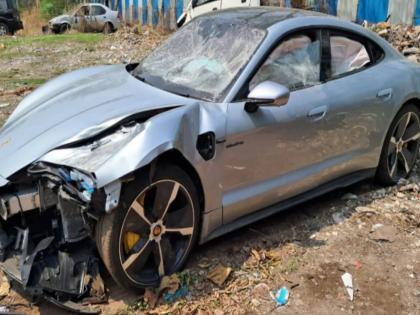Pune Porsche Accident: A Stark Reminder of Delhi BMW Case From 1999 That Became a Bollywood Movie
By Lokmat English Desk | Published: May 24, 2024 02:15 PM2024-05-24T14:15:01+5:302024-05-24T14:16:17+5:30
In a disturbing reflection of a dark chapter in India’s legal history in accident cases, the recent Pune Porsche ...

Pune Porsche Accident: A Stark Reminder of Delhi BMW Case From 1999 That Became a Bollywood Movie
In a disturbing reflection of a dark chapter in India’s legal history in accident cases, the recent Pune Porsche accident has drawn stark comparisons to the infamous 1999 Delhi BMW hit-and-run case. Both incidents involve wealthy, influential individuals behind the wheels of luxury cars, resulting in the tragic loss of innocent lives. The parallels between these two cases have sparked discussions about the misuse of power and money in circumventing justice.
The 1999 Delhi BMW Hit-and-Run Case:
The Delhi BMW case of 1999 is etched in public memory not only for its brutal nature but also for the protracted legal battle that followed. On the night of January 10, 1999, Sanjeev Nanda Grandson of Naval Chief and son of famous arms dealer Suresh Nanda, drove his BMW into a police checkpoint in Delhi. The horrific accident resulted in the deaths of six people. Nanda fled the scene but was later apprehended.
The ensuing legal proceedings were marred by allegations of witness tampering and influence peddling. Initially acquitted due to insufficient evidence, Nanda was later convicted in 2008 after a media-led public outcry demanded justice. He was sentenced to five years in prison for culpable homicide not amounting to murder, though he served only two years after his sentence was reduced on appeal.
The case’s high-profile nature and the apparent manipulation of the legal process inspired the 2013 Bollywood hit film "Jolly LLB," which portrayed the challenges of seeking justice against powerful defendants.
On a fateful night, Pune witnessed a tragic accident reminiscent of the Delhi BMW case. The 17-year-old son of a wealthy developer, driving a Porsche, struck and killed two IT professionals, who were travelling on a bike, before crashing into a roadside. Like Sanjeev Nanda, the driver attempted to flee but was soon apprehended by locals and beaten.
Two young IT professionals from Madhya Pradesh, identified as Ashwini Koshta and Aneesh Awadhia, were killed after the teen gored his Porsche into them in Pune's Kalyani Nagar on the night of May 19.
Officials in the Crime Branch confirmed that the police were bidding to make the driver a witness in the case, as on the night of the incident, after the accused left the bar after a binging session with friends, the latter had asked the teen to take the passenger seat and let him drive.
The Justice Juvenile Board on Wednesday cancelled the bail granted to the 17-year-old accused. The Pune Police commissioner said that efforts were on to try the minor accused as an adult. Confirming that an effort was made to frame the driver after the accident, CP Kumar said police are investigating the statement of the driver. CP Kumar also asserted that the Police had accessed the CCTV footage of the accused drinking liquor in the pub (before the accident).
Parallels
Both cases highlight a critical issue in India’s judicial system: the influence of wealth and power in potentially swaying legal outcomes. The Delhi BMW case showcased blatant attempts to obstruct justice through money and influence, resulting in delayed accountability. In contrast, the Pune Porsche case, occurring in an era of heightened media vigilance and public awareness, saw quicker judicial action and a firmer stance against the misuse of power.
Open in app